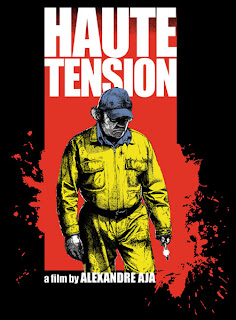AFED #24: Witchhammer [Kladivo na čarodějnice] (Czechoslovakia, 1969); Dir. Otakar Vávra
At the time of writing, director Otakar Vávra is a month short of celebrating his 100th birthday. Yet even in 1969, when he shot this adaptation of Václav Kaplický's novel of the same name about the Northern Moravia witch trials, he was considered one of Czech cinema's old guard.
Witchhammer (or Witches' Hammer, as it's sometimes known) doesn't fit entirely comfortably in the Czech New Wave canon, although Vavra himself was instrumental in the movement. As a lecturer at the state film school FAMU (Film Faculty of the Academy of Dramatic Arts) his open-minded philosophy encouraged the likes of Vera Chytilova (Daisies)and Jaromil Jireš (Valerie and Her Week of Wonders) to innovate and push the boundaries.
His own films, taking this as indication, tend towards a more grounded approach, although by no means as reserved as some of his contemporaries. Starkly shot in black and white, Witchhammer tells the story of Boblig von Edelstadt, a ruthless inquisitor summoned to root out witchcraft after a desperate old woman confesses to stealing communion bread to feed a cow not bearing milk.
Before long Boblig has the local community, including the aristocracy, under his thumb as he begins conducting trials and burning those who are tortured into confessing acts they did not commit. His strongest opponent is Lautner, a deacon whose eventual torture and martyrdom is clearly meant as an analogy of that of Christ.
The film doesn't shy away from the brutal methods used to extract confessions but also skillfully explores some of the mores of its period. This was a time of piety in which sex was perceived as immoral, yet young daughters were readily married off to rich older noblemen. In a provocative opening scene we watch a number of the girls frolicking as they bathe in a way which almost taunts us in our complicity. If desire is wrong then where does that evil originate? In their beauty or our own lustful thoughts?
Although coincidentally Michael Reeves's renowned horror Witchfinder General had been released the previous year it doesn't appear to have served as a direct inspiration. The approaches of the two films are also markedly different: Reeves's is a kind of English western that takes deviates wildly from the facts in its portrayal of the the witchfinder Matthew Hopkins By contrast Vávra sought assistance from historians to ensure accuracy; drawing from actual court transcripts and first-hand accounts.
Yet, as he later commented, Vávra was also conscious of the parallels with the sham trials that took place in Czechoslovakia in 1950's, when the Communist Party purged itself of those elements not considered sufficiently Stalinist. Given the film was being made against a backdrop of renewed Soviet involvement in Czechoslovak affairs following the '68 invasion, this wasn't without an element of risk.
While an austere production, Vavra's film is a far more haunting and cerebral exploration of the theme than others from this period, be it the aforementioned Witchfinder General, Mark of the Devil or Ken Russell's The Devils. If you accept it won't be a bundle of laughs it's well worth tracking down.
Witchhammer (or Witches' Hammer, as it's sometimes known) doesn't fit entirely comfortably in the Czech New Wave canon, although Vavra himself was instrumental in the movement. As a lecturer at the state film school FAMU (Film Faculty of the Academy of Dramatic Arts) his open-minded philosophy encouraged the likes of Vera Chytilova (Daisies)and Jaromil Jireš (Valerie and Her Week of Wonders) to innovate and push the boundaries.
His own films, taking this as indication, tend towards a more grounded approach, although by no means as reserved as some of his contemporaries. Starkly shot in black and white, Witchhammer tells the story of Boblig von Edelstadt, a ruthless inquisitor summoned to root out witchcraft after a desperate old woman confesses to stealing communion bread to feed a cow not bearing milk.
Before long Boblig has the local community, including the aristocracy, under his thumb as he begins conducting trials and burning those who are tortured into confessing acts they did not commit. His strongest opponent is Lautner, a deacon whose eventual torture and martyrdom is clearly meant as an analogy of that of Christ.
The film doesn't shy away from the brutal methods used to extract confessions but also skillfully explores some of the mores of its period. This was a time of piety in which sex was perceived as immoral, yet young daughters were readily married off to rich older noblemen. In a provocative opening scene we watch a number of the girls frolicking as they bathe in a way which almost taunts us in our complicity. If desire is wrong then where does that evil originate? In their beauty or our own lustful thoughts?
Although coincidentally Michael Reeves's renowned horror Witchfinder General had been released the previous year it doesn't appear to have served as a direct inspiration. The approaches of the two films are also markedly different: Reeves's is a kind of English western that takes deviates wildly from the facts in its portrayal of the the witchfinder Matthew Hopkins By contrast Vávra sought assistance from historians to ensure accuracy; drawing from actual court transcripts and first-hand accounts.
Yet, as he later commented, Vávra was also conscious of the parallels with the sham trials that took place in Czechoslovakia in 1950's, when the Communist Party purged itself of those elements not considered sufficiently Stalinist. Given the film was being made against a backdrop of renewed Soviet involvement in Czechoslovak affairs following the '68 invasion, this wasn't without an element of risk.
While an austere production, Vavra's film is a far more haunting and cerebral exploration of the theme than others from this period, be it the aforementioned Witchfinder General, Mark of the Devil or Ken Russell's The Devils. If you accept it won't be a bundle of laughs it's well worth tracking down.




Comments
Post a Comment